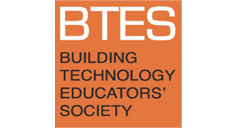Future of Thermal Insulation, Zero Carbon Options
Abstract
The paper is looking into the future of thermal insulation to come up with a fair assessment of traditional and innovative alternatives. The building industry is now looking into not only reducing operational energy, but also embodied energy. A general look at thermal insulation materials currently used in buildings shows an urgent need to transformative change in the market towards low-carbon materials. Since market changes typically take time and face resistance, it is time to find out which future materials are ready to replace the traditional ones. Considering thermal performance of the building envelope, thermal insulation is the layer that contributes the most to overall thermal resistance. High performance buildings call for higher levels of thermal resistance. This research project acknowledges the need to assess embodied carbon of thermal insulation. First, a review was conducted of insulation types available in the American market. A sample of materials was selected based on availability and market share. The sample includes fiberglass bass insulation, cellulose, extruded Polystyrene, and spray foam. Second, a typical wall assembly for a house in the U.S. was defined and modeled using the selected types of insulation materials. Location of the study set to Oklahoma and the baseline wall assembly was in compliance with IECC 2018. Total R-value of all tested wall assemblies were kept the same in order to limit the analysis to embodied energy, since operational energy would be equal in all cases. Then, life cycle carbon analysis was performed in Tally to assess the insulation types. Research results showed that Insulative Cork Board had the best performance (lowest carbon footprint) among the types of materials selected. Cork Board undergoes extensive testing of the final product with third-party certification and verified EPD (Environmental Product Declaration), resulting in high-quality input data for carbon analysis. The next contender among the innovative insulation materials is Mycelium. Mycelium is still a new product to the market and there has not been any certification performed to ASTM standards.
Keywords: Decarbonization, Insulation Materials, Building Envelope, Life Cycle Analysis, Building Innovations
How to Cite:
Mollohan, T., Mansy, K. & Yowell, J., (2023) “Future of Thermal Insulation, Zero Carbon Options”, Building Technology Educators’ Society 2023(1). doi: https://doi.org/10.7275/btes.1938
Downloads:
Download PDF
609 Views
349 Downloads

